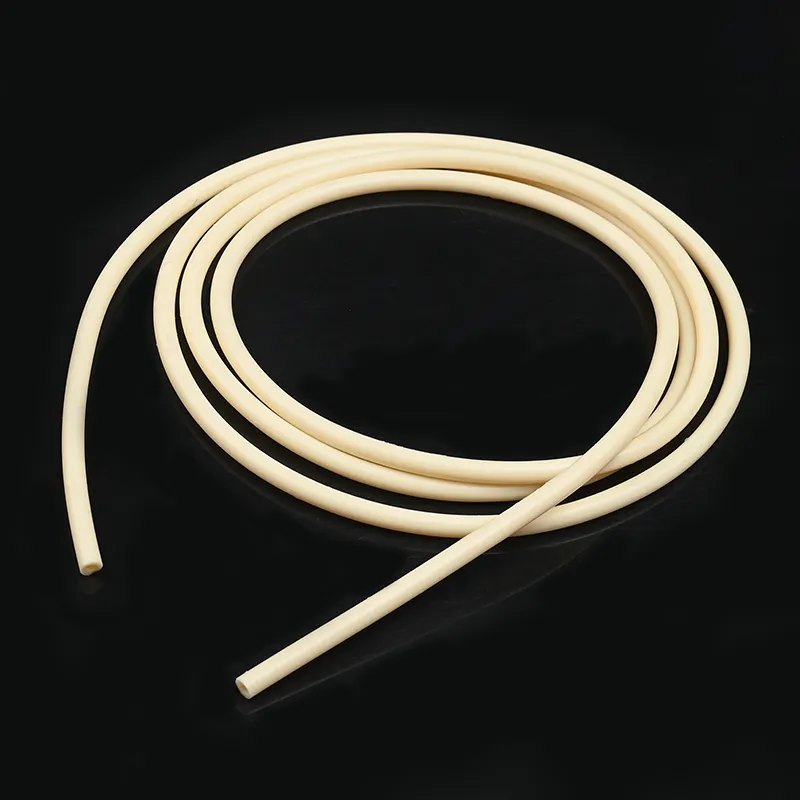Peristaltic Pump Tubing in Medical Applications: Best Practices
Fundamentals of Peristaltic Pump Tubing
Peristaltic pump tubing operates on the principle of peristalsis, where intermittent pressure on the flexible tube's wall pushes the fluid forward. This mechanism is advantageous in medical applications because it ensures that no cross-contamination occurs. Think of a snake moving through its environment; the gentle yet effective squeezing action of peristaltic tubing mimics this natural movement, ensuring fluid is moved reliably and safely.
Tubing Materials and Selection

The choice of tubing material is crucial for the effectiveness and longevity of peristaltic pump systems. Common materials include silicone, PVC, and TPE (Thermoplastic Elastomer).
- Silicone: Known for its excellent chemical resistance and biocompatibility, silicone is ideal for medical applications where high purity and stability are required. For instance, silicone tubing is often used in dialysis machines to ensure that the fluid remains free from contaminants and sterile. It's a go-to material for maintaining patient safety and sterility.
- PVC: Offers good durability and cost-effectiveness but has limitations in terms of chemical resistance and biocompatibility. PVC is commonly used in applications where cost is a primary concern and where less stringent sterilization requirements apply.
- TPE: Provides a balance of flexibility and durability, often favored for its softness and biocompatibility. TPE is suitable for applications requiring a softer texture and better flexibility.
When selecting tubing, consider the following factors:
1. Fluid Compatibility: Different materials can handle different fluids. For example, silicone is preferred for biological fluids due to its biocompatibility, while PVC is more suitable for less sensitive fluids.
2. Biocompatibility: The material should be safe for contact with bodily fluids. Silicone and TPE are often biocompatible, making them excellent choices for medical use.
3. Temperature Resistance: Choose materials that can withstand the temperatures of the fluids being handled. Silicone is highly temperature-resistant, making it ideal for various applications.
Best Practices for Selection
To ensure the right tubing is chosen for your application, follow these best practices:
1. Assess the Fluid: Determine the type of fluid that will be passed through the tubing. This helps in selecting a material that can handle the chemical or biological properties of the fluid. For instance, if you need to handle blood derivatives, silicone is a preferred choice due to its biocompatibility.
2. Consider the Application: The specific application (e.g., patient care, laboratory testing) will influence the selection criteria. Patient care applications often require higher biocompatibility and sterility.
3. Evaluate Maintenance Requirements: Choose materials that are easy to clean and maintain to reduce downtime and associated costs. Silicone and TPE are generally easier to clean than PVC due to their smooth surface and resistance to cracking.
Maintenance and Troubleshooting
Regular maintenance is essential to ensure optimal performance and longevity of peristaltic pump tubing. Here are the key steps:
1. Cleaning: Use appropriate cleaning agents to remove residual fluids and debris. Avoid harsh chemicals that may degrade the tubing. For example, specialized detergents are recommended for cleaning silicone tubing.
2. Inspection: Regularly check tubing for signs of wear, such as cracks or abrasions. Replace tubing as needed to prevent contamination and ensure sterility. For instance, maintaining integrity is crucial in preventing contaminants from entering the system.
3. Storage: Store tubing in a clean, dry environment to prevent contamination and deterioration. Ensure that the storage area is free from dust, moisture, and mechanical stress.
Regular maintenance not only prolongs the life of the tubing but also enhances patient safety by reducing the risk of contamination.
Future Trends in Medical Applications
The medical industry is constantly evolving, and advancements in peristaltic pump tubing technology are on the horizon. Here are some of the potential advancements:
1. Advanced Materials: Development of new materials with enhanced biocompatibility and chemical resistance. For example, biodegradable tubing could reduce the environmental impact of medical devices.
2. Intelligent Systems: Integration of smart sensors and real-time monitoring to improve system efficiency and patient safety. These systems can alert healthcare professionals to potential issues before they become critical.
3. Miniaturization: Smaller, more portable peristaltic pumps for point-of-care applications. This could make medical procedures more accessible and convenient for both patients and healthcare providers.
Conclusion
In conclusion, peristaltic pump tubing is a vital component in medical applications, offering reliability, ease of use, and biocompatibility. By understanding the fundamentals, selecting the right material, and maintaining the tubing properly, healthcare professionals can ensure the highest standards of patient care. As the technology advances, the potential for peristaltic pump tubing in medical applications remains promising, with new materials and intelligent systems poised to transform the industry.









